Art Nouveau and Art Deco are two of the most integral styles of all time. They developed around the late 19th century and early 20th century to define visual culture. The best part is that since then, they have been used by artists from all over.
Contents
You have come to the right place if you have been wondering about Art Deco vs Art Nouveau. Many people who lack art knowledge consider the two movements the same. However, keep in mind that they are different movements with some similarities.
So here is everything you need to learn about Art Deco vs Art Nouveau.
Art Nouveau Origins
Art Nouveau developed in the late 19th century around 1880 and ended with the beginning of the first World War. This movement translates into "new art" and represents the changing times of Europe. The key feature of this art is that its primary inspiration is nature and the Arts and Crafts movement.
This art style focuses on flowing lines and natural elements such as flowers, trees, and much more. You can notice a combination of geometric shapes and asymmetry in this art movement. The key thing to note about this style is that it emphasizes applied arts like architecture and jewelry more.
Besides that, you may not observe much emphasis on traditional art such as painting in this movement. The Eiffel Tower is a prime example of this style because of its unique visual impression. Not only that, but it also stands in harmony with nature.
The 5 Best Art Nouveau Examples
Here are top examples of Art Nouveau that will help you understand this style better:
1. The Kiss

The Kiss is one of the best examples in Art Nouveau history because it emphasizes the style’s breakthrough. Gustav Klimt used organic patterns and motifs to produce this high-quality work. The best feature of this art is that it complies with the Vienna Secession.
Vienna Secession was a local variation of this new art style during that time. The best part about the painting is that it includes various elements of Art Nouveau. Some key examples are the use of metal, flower designs, female clothing, and much more.
2. Gismonda
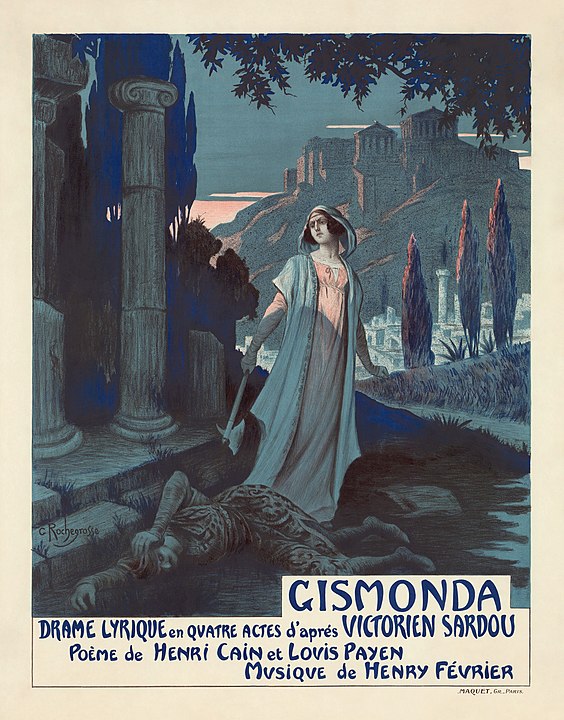
Gismonda was made in 1895 by Alphonse Mucha, a Czech artist. The work defined the Nouveau movement excellently. You should keep in mind that this art was used as posters for promoting theatre productions.
Besides that, you can notice the mustard yellow color, which is a key feature of many Art Nouveau paintings. Not only that, but this artwork also contains a combination of floral designs. The poster also featured actress Sarah Bernhardt many times to represent magical beauty.
3. Stoclet Palace
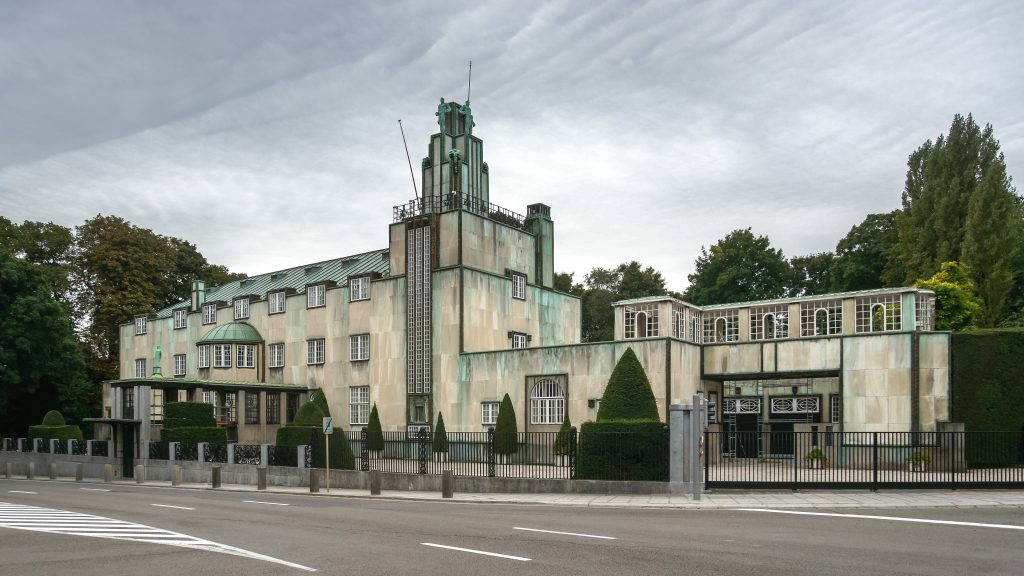
The Stoclet Palace is one of the top attractions for tourists and locals in Brussels. One of the best things about this place is its unique architecture that defines the Art Nouveau style at its best. For example, the Palace's design includes parabolic curves.
You can also view the different nude sculptures on the Palace’s tower made purely of bronze. Besides that, the interior of the property also adheres to the Nouveau style. The best part is that Josef Hoffman, the architect of this attraction, is also the co-founder of the Wiener Werksatte movement.
4. Divan Japonais

Divan Japonais was a café in Paris that was popular during 1892 that added to the city's nightlife. The best part is that you will find a poster of the same name that emphasizes the Art Nouveau style. This piece was designed by Henri de Toulouse-Lautrec to advertise the café.
The sweeping curves of the poster define the early Nouveau style very well. Not only that, but the sensual portrayal of the different stars also adheres to this art movement. The use of soft colors such as yellow and orange also enables you to focus on the Nouveau style.
5. Wisteria Lamps Of Tiffany Studios
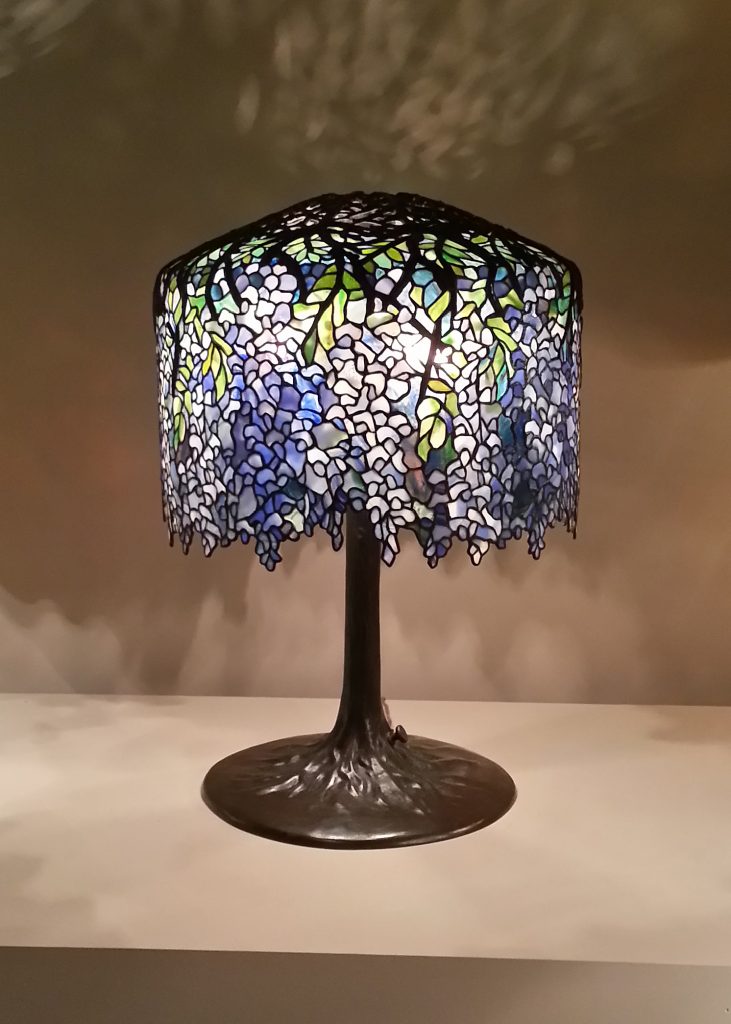
The top thing you should understand about Art Nouveau is that it is not limited to posters and paintings. You can also find this style in objects such as the Wisteria Lamps of Tiffany Studios. The lampshades with stained glass hold significant importance in Nouveau history.
Besides that, the lamps also contribute to that century's luxury factor. Louis Comfort Tiffany, the owner of Tiffany Studios, designed the items himself. The floral, dragonfly, and peacock designs on the Wisteria Lamps are all synonymous with Art Nouveau.
Art Deco Origins
Now that you understand Art Nouveau entirely, it is time for you to comprehend the Art Deco style. The key thing you should note is that the Nouveau period lasted for almost thirty years. Not only that, but it began to fade because of the emergence of Art Deco.
The top fact you should understand is that Art Deco came into being around the 1920s. This style became prominent in 1925 during the large Paris exhibition. However, it still took more than 35 years for the movement to be named Art Deco.
Art Deco started around the first World War and grew to see the second World War. It responded to the tough times by displaying modern creativity using geometry. The best part about this style is that it focuses on bold shapes instead of soft ones like Art Nouveau.
Besides that, this style has been famous amongst sculpture makers and marks the use of shiny material. Simply put, Art Deco is emphasized in the traditional art techniques more.
The 5 Best Art Deco Examples
Here are the five best art deco examples that will easily allow you to comprehend this style:
1. Spirit Of The Wind

This is a sculpture piece by Rene Lalique, who started his career specializing in Nouveau Art jewelry. However, later he became famous for his Art Deco sculpture designs. Spirit of the Wind was created in 1930 as a car hood décor piece.
However, the sculpture has been recreated several times over the year. The straight lines at the back of the model’s hair represent the speed innovations made by the automobile sector.
2. Symphony In Black

Fashion designer Erte has been famous since the 20th century for defining various film posters and costumes. After all, he has worked on numerous movies of that era, such as Ben-Hur. Not only that, but he has designed for renowned magazines such as Harper's Bazaar and Cosmopolitan.
Symphony in Black remains Erte's best work because of the unique Art Deco style. The sleek figure and earthly grandeur of the post set the tone of this movement. A vital feature of this piece is that it has been recreated several times on posters, cards, clothing, and much more.
3. Autoportrait
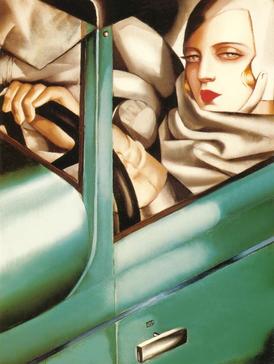
Autoportrait by Tamara de Lempicka is one of the prime examples of the Art Deco style. The best part about the artist is that she specialized in using this art for high society and luxury themes. Her nude and aristocrat pieces are known in various parts of the world.
In 1929, she designed the Autoportrait and represented herself as a woman in the Gatsby era. The prime features of this painting are wealth and beauty.
4. Fortissimo
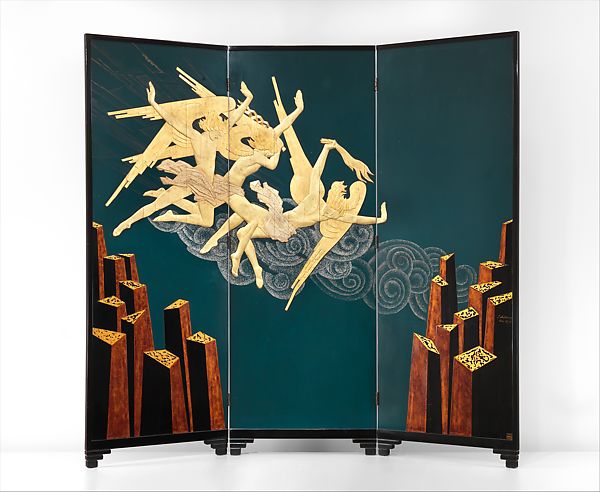
Fortissimo is one of the top artworks that well define the luxury Art Deco theme. It was designed by Jean Dunand, who was known for making décor items such as vases, metal trays, and much more. He also specialized in producing various lacquered screens in the 20th century.
You should also note that Fortissimo is one of the best-lacquered screens by this artist. The piece displays the Art Deco style by emphasizing its hard edges and geometric shapes.
5. Normandie

Cassandre was considered amongst the best graphic designers from the period of 1920s to the 1930s. The artist specialized in making tech innovations of that era, such as speeding cars, new text fonts, and much more. Normandie is a key poster that Cassandre designed to advertise the SS Normandie.
Art Deco Vs Art Nouveau: The Key Differences
Now that you understand the two art movements, you must be wondering about the exact differences between them. Well, here is what you need to know about them:
Art Nouveau Leans Towards An Organic Style
The top difference between the two movements is that Art Nouveau is more organic because of nature's incorporation. Moreover, the flowing patterns and shapes also contribute to this. Besides that, the style also displays seamless continuity and a desire to connect different art forms.
Meanwhile, Art Deco cannot be considered highly organic because it leans towards objects and other designs. For instance, this style features hard edges more often than flowing lines and curves.
Whiplash Curl Is An Art Nouveau Feature
There are many defining features and techniques that come under Art Nouveau. One of the top ones that you will come across is the whiplash curl design. It is limited to the Art Nouveau style and sets it apart from many Art Deco features.
The key feature of the whiplash curl is that S design that represents dynamism and a unique shape. You must note that this form is unique because it is different from conventional designs. Whiplash curl is also a symbol of artistic freedom because it is a liberating Nouveau feature.
Aubrey Beardsley is an English illustrator who has used the whiplash curl many times. Hector Guimard’s Paris Metro gates also emphasize this feature well.
Art Deco Leans Towards Streamlined Style
Art Nouveau is known for its flowing curves and seamless lines, but Art Deco is defined by a different aesthetic feature. This style is considered more streamlined because its inspiration is technology instead of nature. This is why you may have come across various posters highlighting different tech innovations.
Besides that, this style's angular shapes and straight lines also add to the streamlined feature. Additionally, Art Deco uses high-end materials and new elements for the pieces. For instance, aluminum, glass, and polished surfaces add a modern touch to the designs.
Art Deco also uses older periods of Babylon, Ancient Egypt, and much more for references. This is another feature that sets it apart from the Nouveau style.
Art Deco Is More Easily Accessible
If you are a keen art lover, you may want to see the different pieces of the two movements. The top thing to note is that you will come across Art Deco more than the other style. This is especially true if you live in the US because New York has multiple Art Deco icons.
The Chrysler Building is one of the top symbols of Art Deco because of its polished stainless-steel surface and modern aesthetic. Besides that, the Empire State Building also marks the Art Deco period. Its bold and angular shapes make the architecture appear streamlined.
The Two Styles Have Originated From Different Locations
A key feature of Art Nouveau is that its roots have been tracked to rural England. Not only that, but its origins involve the Arts and Crafts movement of that era. After that, the style spread to Europe, Austria, the US, and other countries.
Meanwhile, Art Deco has originated from Paris during an exhibition and then spread to Europe. After that, it finally reached the US during the Jazz era of the 1930s.
Art Nouveau Came Before Art Deco

One of the top things about the two movements is that Art Nouveau came before. This is an integral part of the history of the two styles because the Nouveau celebrates pre-war life by emphasizing romance and escapism.
Meanwhile, Art Deco celebrates the hope and joy of the post-war era. It highlights jazz music, parties, and much more. You can also observe this by checking out Tamara de Lempicka’s different Art Deco paintings.
Final Words
This is everything you need to know about Art Deco vs Art Nouveau. Both the styles are distinct from one another but also share some similarities. The best part is that you can find examples of both worldwide.
Besides that, modern artists also use the evolved form of these two styles in their works. This is why the movements are considered timeless by many people. So be sure to check out the multiple examples mentioned earlier to visualize Art Deco and Art Nouveau.



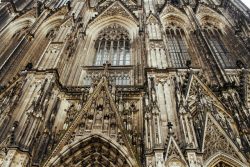
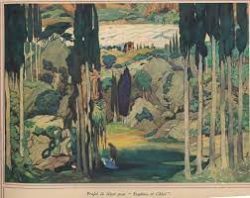
Leave a Reply
You must be logged in to post a comment.